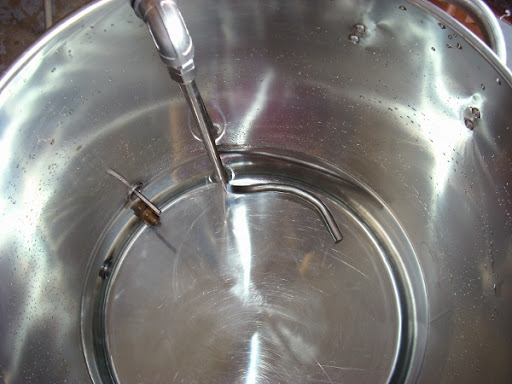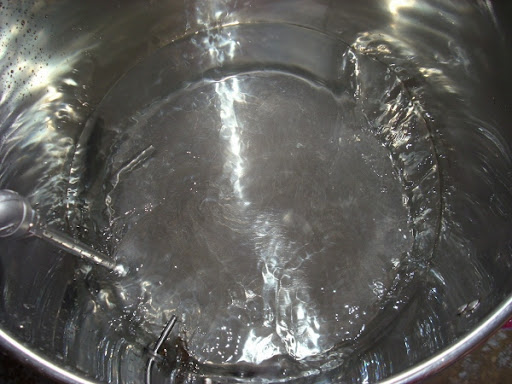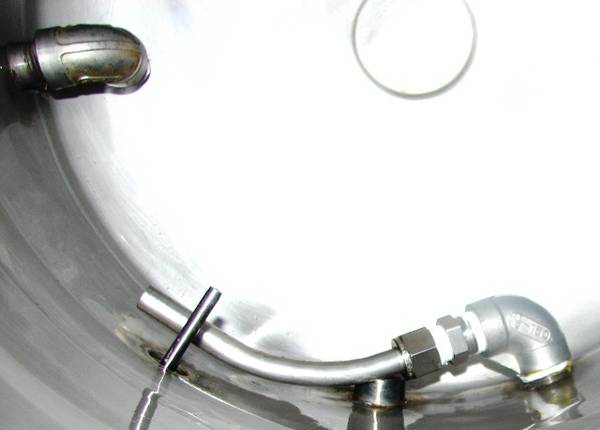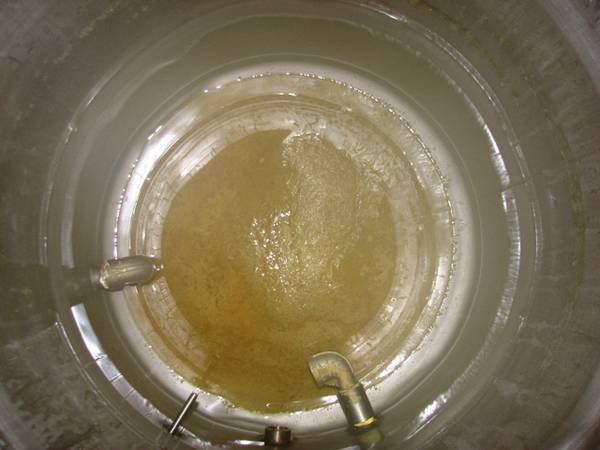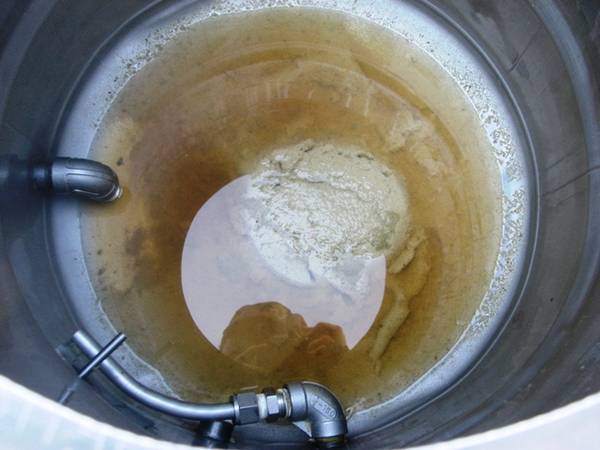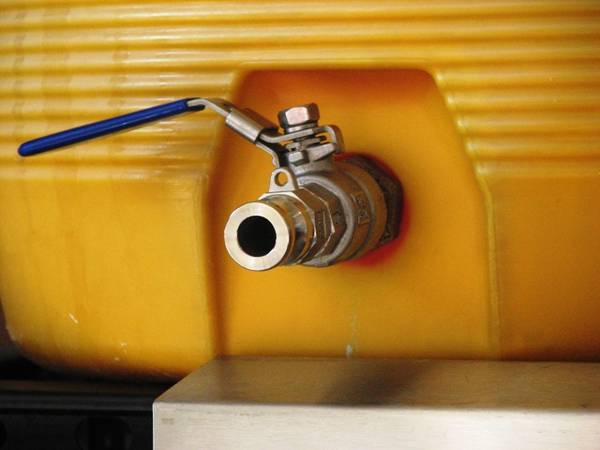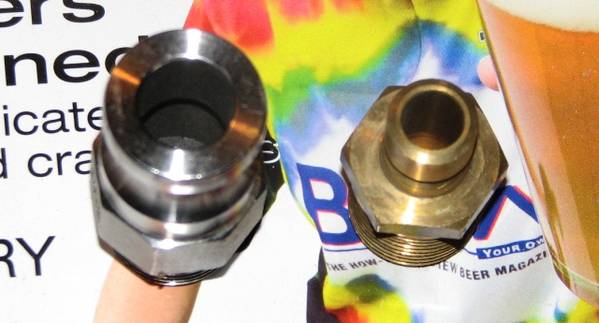I just wanted to see exactly how you had the connectors fastened to the panel, and I also wanted to see the exact fitting you used for the disconnects. I like the 90 bend you have right on the disconnect.
The 90 degree quick disconnects used on the hoses are from McMaster-Carr, part number 6739K68.

They have a hose barb on one end, so they will fit right into any 1/2" ID hose. I use the high temp silicone hose.
The male QD is part number 6739K59

The male with the pipe threads is held in place with a 1/2" nut normally used in electrical work from the back of the panel.
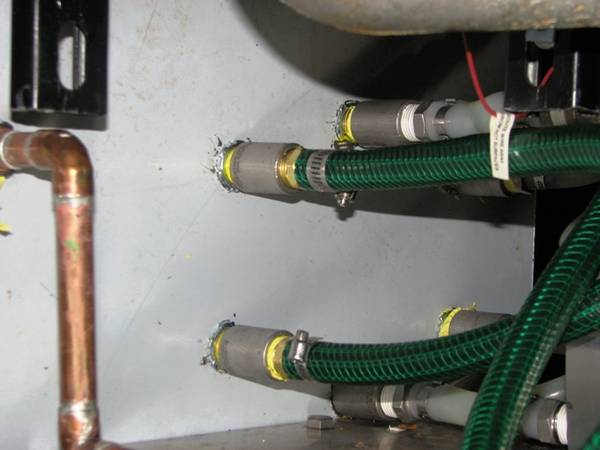
From there I use a female threaded coupler into which I screw a male thread to hose barb adapter.
As for the whirlpooling, I guess you lose some wort in the bottom of the kettle since you can't extend you drainage tube right down into the center of the dome? My original plan was to extend the tube to there, use a false bottom to catch the large trub, and then some sort of a large sheet of fine stainless mesh to filter the fine hop particles. But I figured it may clog since I use pellets, and the stainless is expensive. So I guess you just have your tube on the edge?
There will always be losses when you brew. Plan for them. I usually leave 0.625 gallons behind in my kettle. That is including hot break, hops and other trub. No problem. I take all this into account when I do my brewing calculations. Too many people try to squeeze every last ounce of liquid out of the kettle. I plan for 5 gallons into each keg. I back calculate how much I need at each stage to achieve this. I start my boil with 15 gallons in my kettle. After a 90 min. boil, I will end up with 11.5 gallons split between two fermenters, leaving the hops and trub behind.
I also know breweries have their tube tangent to the kettle wall. Can you explain the insice of your kettle to me? Looked like you have a large drainage tube on the edge, and then another 90 bend tube that is positioned sideways. That's the interesting part.
I wish I could have tangential ports for my whirlpool. I do not have the skills to build them myself, so a 90 degree fitting was the closest I could come. I do draw off from the side of the kettle. I have an elbow with a close nipple threaded into it so I leave behind most of the trub.














































![Craft A Brew - Safale S-04 Dry Yeast - Fermentis - English Ale Dry Yeast - For English and American Ales and Hard Apple Ciders - Ingredients for Home Brewing - Beer Making Supplies - [1 Pack]](https://m.media-amazon.com/images/I/41fVGNh6JfL._SL500_.jpg)












